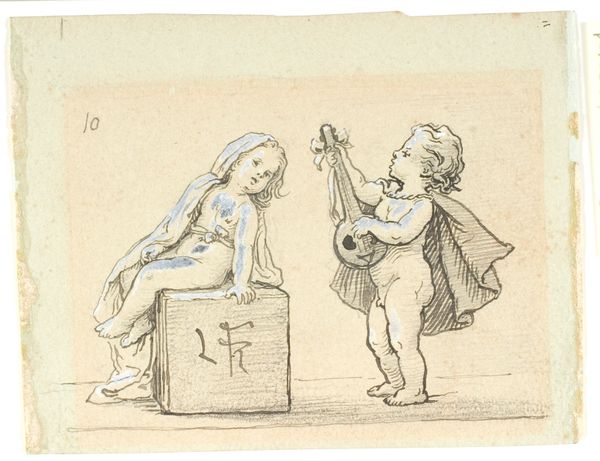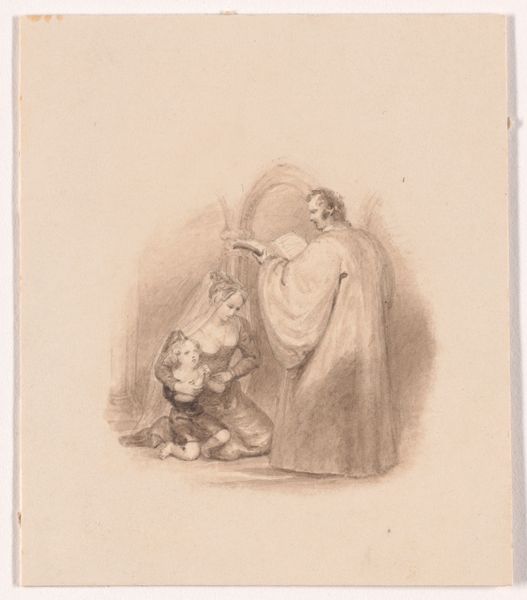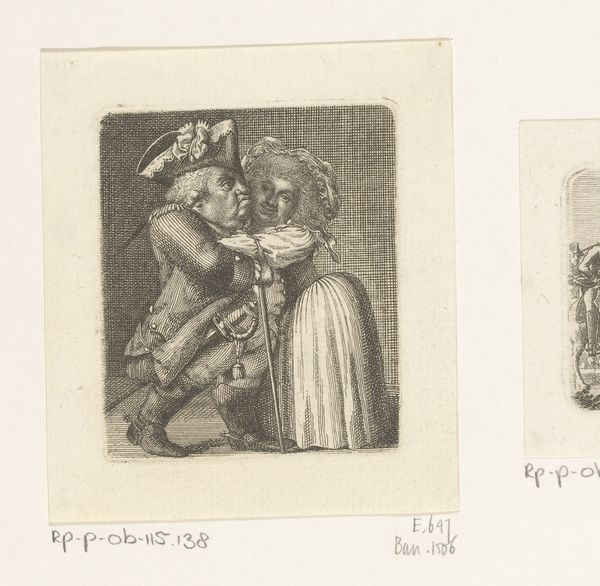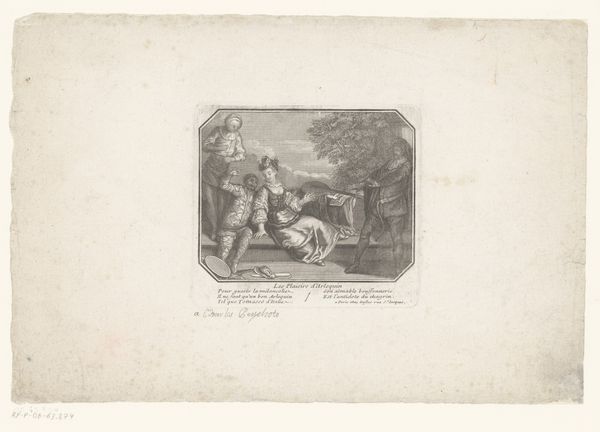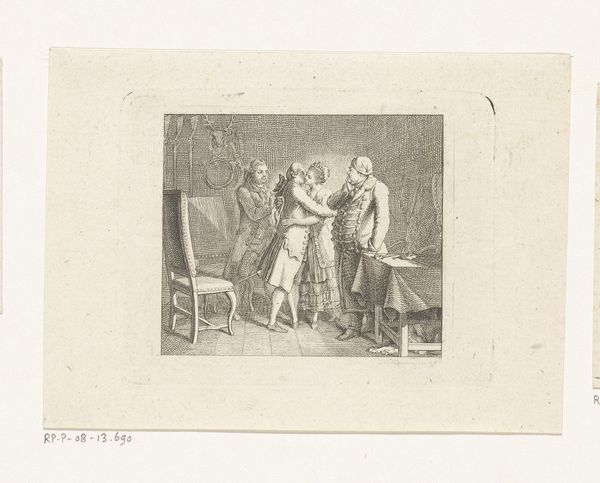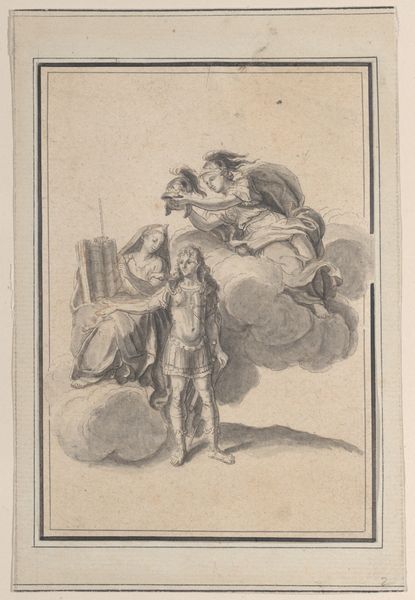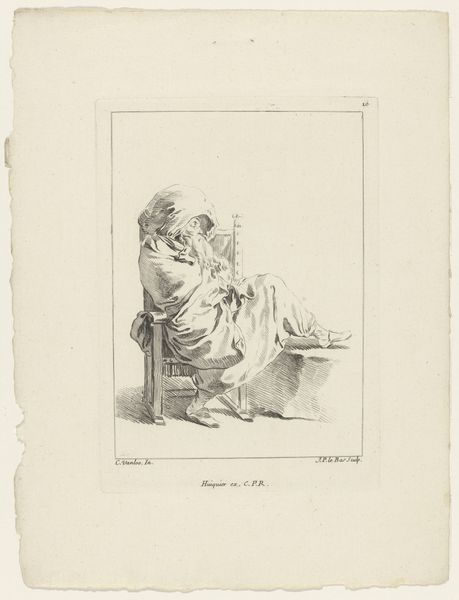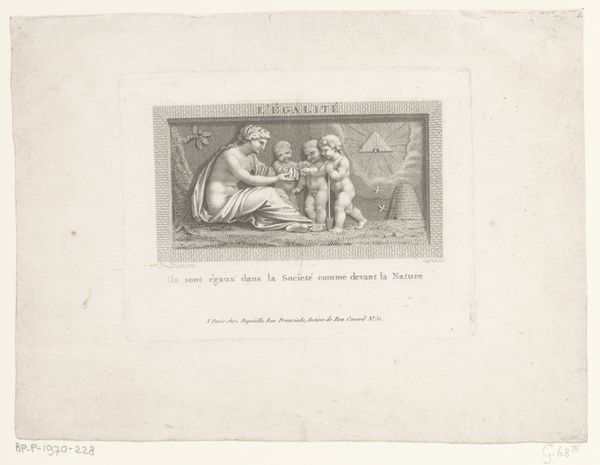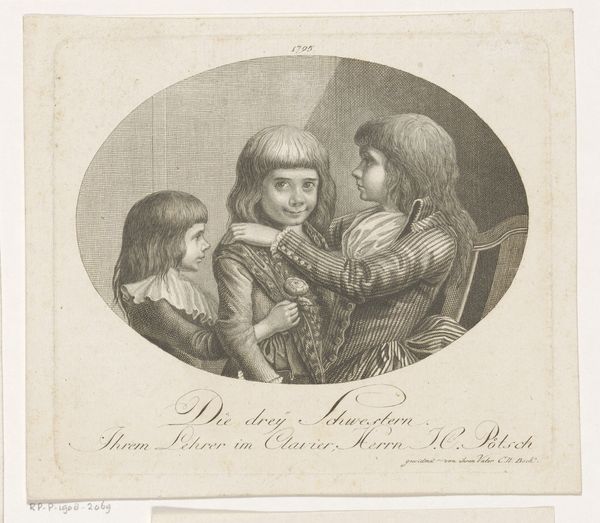
drawing, print, etching, engraving
#
pencil drawn
#
drawing
#
allegory
# print
#
etching
#
pencil sketch
#
figuration
#
pencil drawing
#
line
#
genre-painting
#
engraving
Dimensions: 95 mm (height) x 142 mm (width) (bladmaal)
Curator: Waldemar Bøhme's "Vignet til 'Løftet'," created in 1878, presents us with a delicate scene rendered in etching, engraving, and pencil. Editor: My first impression is one of gentle melancholy. The figures are rendered with such fine lines, it feels almost like a whisper. Curator: The line work is indeed critical here. Bøhme uses delicate cross-hatching to create subtle gradations in tone, lending depth and volume to the figures and suggesting a dreamy, ethereal atmosphere. The composition relies heavily on contrast—between light and shadow, and between the stillness of the seated figure and the movement of the standing one. Editor: Considering this work as a "vignet," intended for integration within a larger publication, perhaps we should investigate "Løftet" itself. This context shapes our reading—a promise suggested by the title. Do the figures carry any socio-political symbolism? The figure playing the lute suggests romantic serenade but could this represent the comforting, and familiar side of a political situation in contrast to the more reserved figure on the box. Curator: That’s a fruitful avenue. Focusing on formal qualities, though, note how the seated figure, draped in what seems to be classical garb, sits atop a cube bearing curious symbols. This placement is not merely compositional; it anchors the scene, establishing a visual weight against the other figure who gestures with the instrument. The architectural elements and subtle text below offer unique qualities within Bøhme's prints. Editor: Thinking about reception, though, what might a late 19th-century Danish audience have made of these classical allegories? Were they merely decorative, or did they touch on the national debates playing out in cultural institutions such as SMK at the time? Curator: Precisely. Bøhme harnesses the visual language of allegory but also explores a modern aesthetic through meticulous detail. The etching technique becomes integral in how we receive it. Editor: It brings to mind the tension inherent to allegorical form, between conveying meaning and creating ambiguity, allowing this “vignet” to become a reflection. Curator: An astute observation; it pushes beyond mere historical contextualisation to encourage thoughtful analysis, regardless of socio-cultural impacts. Editor: I’m left pondering how its formal grace served Bøhme's broader communicative aims within the context of his career, the era and particularly that original text. Curator: A question, I think, worth considering well after our analysis.
Comments
No comments
Be the first to comment and join the conversation on the ultimate creative platform.
